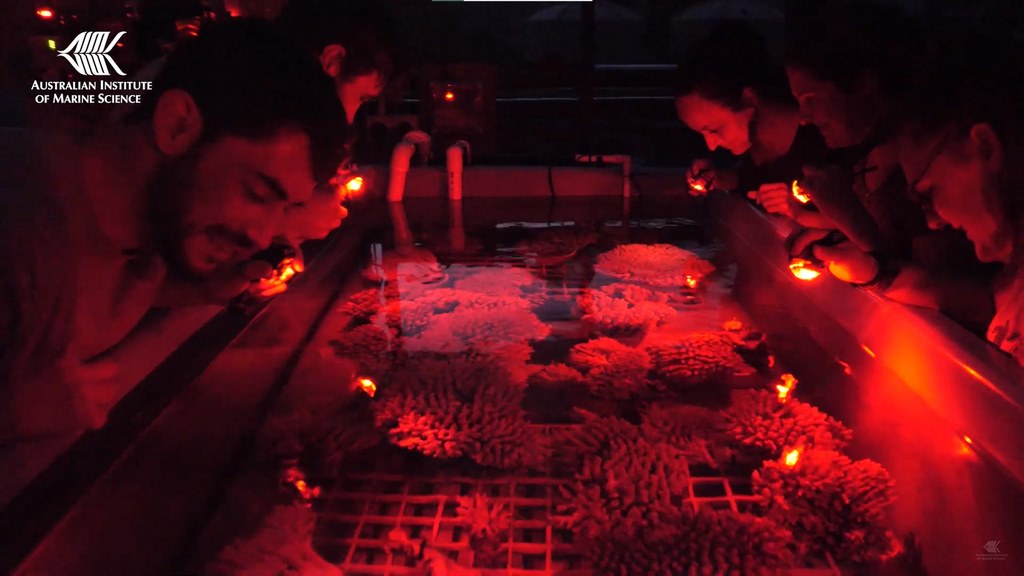The first offseason coral spawning by the Australian Institute of Marine Sciences (AIMS) in an experimental aquarium, came months before the Great Barrier Reef’s spawning season.
The natural coral spawning on the Great Barrier Reef takes place normally at night with the help of a full moon and is considered one of the planet’s most extraordinary natural phenomena.
The annual event when corals on the Reef reproduce usually happens on a handful of nights in November or December.
“Finally, this year we’ve managed to get 43 coral colonies to spawn six months before they are supposed to,” said senior aquarist Lonidas Koukoumaftsis.
Artificial moonlight and controlled temperature were successfully used on the corals to replicate the environmental conditions that prompt spawning.
“We’re going to have a lot of opportunities to advance coral reproductive biology,” Koukoumaftsis said.

Researchers previously had only that one window to take advantage of, so they can advance research critical to the Reef’s future.
But with this breakthrough it means there will be more occasions for marine scientists to further their coral biology knowledge to better protect reefs from climate change.
“The ability to obtain coral larvae multiple times a year allows scientists to undertake research that is critically needed to determine how best to help reefs recover from disturbances,” Dr Carly Randall said.
“At-scale reef adaptation and restoration is a race against time.
“The ability to control the timing and frequency of spawning in the lab increases research opportunities to stay ahead of the curve and accelerate the development of feasible options to protect the Great Barrier Reef from some of the effects of climate change.”






